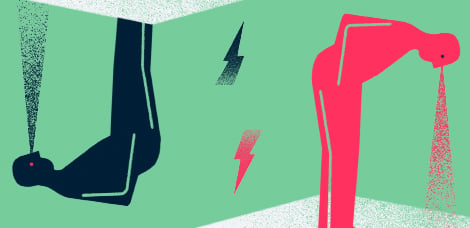-
TrendsHealthcare
-
SectorHealthcare and Pharmaceutical Industry
-
CountriesChileGlobal
The increasing health needs of more aged and demanding populations are causing high stress for all governments and the most diverse health stakeholders; care models lack the operational and financial capacity to serve everyone.
However, if we consider that the goal of any health system should be to maintain people’s health and reduce or delay damage once it occurs, we can say there is much to be done to provide social and political sustainability and credibility to these systems. There is ample evidence that more concerned, well-supported, and well-guided people can significantly reduce their demand levels, increasing their years of healthy life.
This implies a commitment from all involved actors, particularly the individuals themselves. Many factors and actors influence and collaborate in this endeavor. The so-called social determinants of health are vital and precede the actions that health teams can and should take: good access to housing, physical activity, nutrition, potable water, electricity, and especially education, among others, are far more important for people to be agents protecting their own health and that of those around them.
Today there is a consensus on the importance of Primary Health Care (PHC) with a family and community focus; acting close to people is essential to influence adherence to healthy behaviors and to timely prevent and manage damage. Chile, a country with complex geography, has a long history of successes in the development of PHC.
However, it is necessary globally, not just in Chile, that this strategy be strengthened and operationally improved by incorporating new technologies, already available and in development, which would allow for better identification and care of high-risk patients, particularly those suffering from non-communicable chronic diseases such as hypertension, diabetes, or depression, among many others. It is demonstrated that a significant percentage of older adults have four or more of these diseases which, if well-controlled, could significantly reduce damage and healthcare demand.
Among these technologies, we can mention those that allow the identification and georeferencing of these populations, which will enable more precise allocation of human, physical, and financial resources, improving the cost-effectiveness of these care services. Electronic health records that can utilize artificial intelligence would allow these people to be treated more comprehensively and accurately by integrated and collaborative teams of well-trained professionals and technicians, using correct KPIs – key performance indicators – to evaluate results, promoting more efficient, timely, and accurate payment models. Using remote biometric sensors and other information and communication technologies (ICTs) for daily monitoring or education/training of these high-risk patients can also be highly profitable. All this data should be available to be shared, with timeliness and security, in integrated healthcare networks, avoiding duplication of laboratory tests and imaging and other high-cost and/or high-risk procedures. Focusing on women’s care, who are more committed and dedicated to their own health as well as that of their families, is highly recommended to achieve good and lasting health outcomes.
By being embedded in the territory where people live, PHC can better interact with the intersector, especially relevant in education, housing quality, neighborhood, and public safety; again, data and information analysis becomes relevant to coordinate these different actors in the pursuit of better living and health conditions for people and their families.
In summary, there are countless opportunities for political and social authorities, insurers and providers, both public and private, as well as companies from various sectors, to contribute to this care strategy. This implies new incentives and a profound cultural change so that together, collaboratively and proactively, we can reverse the current trend, which is unsustainable and generates deep insecurity and inequality in significant percentages of our societies. This change requires extensive and strategic communication to accelerate this inevitable and urgent transformation, avoiding conflicts and crises that only delay what is unavoidable. People cannot wait.
Dr. Pedro García
Counselor Advisor at LLYC Chile and Former Minister of Health of Chile.



